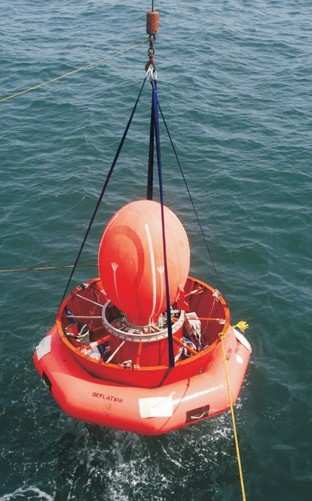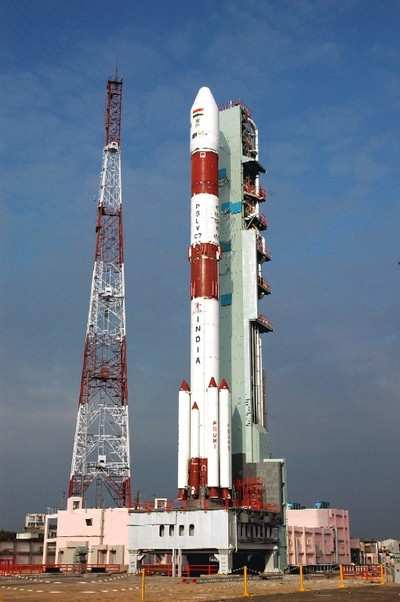Tue, Jan 23, 2007
Major Milestone For Country's Manned Space Program
India's Space Research Organization (ISRO) announced Monday it
has safely deorbited and recovered a capsule launched on January 10
from a facility north of the city of Chennai. The capsule was one
of four payloads aboard the rocket and was part of an effort by the
country to develop a manned spaceflight program.

The 1,210 pound Space Capsule Recovery Experiment (SRE) spent 11
days in orbit before splashing down in the Bay of Bengal yesterday.
(The above picture was taken during capsule recovery testing --
it's not from the actual SRE recovery).
A. Subramoniam, head of the team that designed and built the
capsule at ISRO, told the Sydney Morning Herald, "[It] landed in
the Bay of Bengal ... as per schedule. The mission is a great
success [and] a stepping stone to design and build our very own
reusable spacecraft, and eventually [carry out] manned missions
into space, too."
India's space agency has built and orbited communications
and remote-sensing satellites for years, but this mission marks a
first attempt at deploying a reusable spacecraft.
India's home-grown Polar Satellite Launch Vehicle --
dubbed PSLV-C7 -- carried the capsule aloft along with an
Indian mapping satellite, an Indonesian earth observation satellite
and an Argentinian educational satellite. The four objects were
lifted to a 395-mile polar orbit.

PSLV is ISRO's workhorse launch vehicle. It's a four-stage
rocket using a combination of solid and liquid propellants with a
total lift-off weight of nearly 300 tons. The agency boasts eight
consecutive successful launches with the booster since it
started service in 1994.
The SRE, whose primary mission was to aid India in developing
re-entry procedures and recoverable/reusable space technologies,
also carried two microgravity experiments into space and back to
earth.
Although ISRO officials say the country won't likely put an
astronaut in space before 2014, it says Monday's success will help
the country in its preparations for a 2008 unmanned moon
mission.
More News
Aero Linx: Model Aeronautical Association of Australia MAAA clubs are about fun flying, camaraderie and community. For over 75 years, the MAAA has been Australia’s largest fl>[...]
Touchdown Zone Lighting Two rows of transverse light bars located symmetrically about the runway centerline normally at 100 foot intervals. The basic system extends 3,000 feet alon>[...]
“Discovery and innovation are central to our mission at Virgin Galactic. We’re excited to build on our successful record of facilitating scientific experiments in subor>[...]
How To Get A Story On Aero-TV News/Feature Programming How do I submit a story idea or lead to Aero-TV? If you would like to submit a story idea or lead, please contact Jim Campbel>[...]
Student Pilot Reported That During Rotation, “All Of A Sudden The Back Of The Plane Kicked To The Right..." Analysis: The student pilot reported that during rotation, “>[...]
 ANN's Daily Aero-Linx (05.02.24)
ANN's Daily Aero-Linx (05.02.24) ANN's Daily Aero-Term (05.02.24): Touchdown Zone Lighting
ANN's Daily Aero-Term (05.02.24): Touchdown Zone Lighting Aero-News: Quote of the Day (05.02.24)
Aero-News: Quote of the Day (05.02.24) ANN FAQ: Contributing To Aero-TV
ANN FAQ: Contributing To Aero-TV NTSB Final Report: Cirrus Design Corp SR20
NTSB Final Report: Cirrus Design Corp SR20




